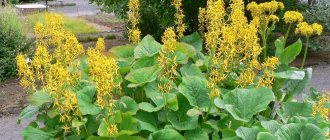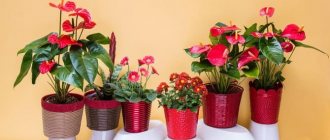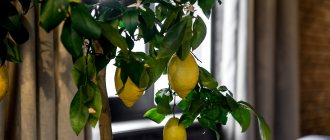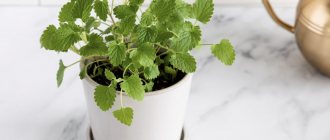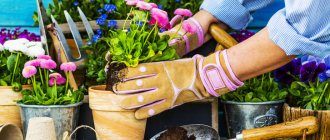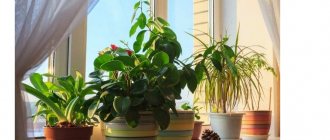| Kind of work: | Essay |
| Date added: | 21.01.2020 |
- This type of work is not a scientific work, it is not a finished final qualifying work!
- This type of work is a finished result of processing, structuring and formatting collected information intended for use as a source of material for independent preparation of educational work.
If you have a hard time understanding this topic, write to me on WhatsApp, we’ll look into your topic, agree on a deadline, and I’ll help you!
If you want to learn how to correctly carry out and write abstracts on any subject, then on the page “what is an abstract and how to do it” I wrote in detail.
Introduction
Flower plants have not only aesthetic, but also great sanitary value and protect cities and towns from smoke, exhaust gases, dust, etc.
Many plants have phytoncidal properties. Parks, gardens, avenues and boulevards are special arteries that purify the polluted air of the city.
Planting trees and shrubs significantly smoothes out the amplitude of temperature fluctuations, increases air humidity on hot days, and also has reclamation and water conservation value.
Green spaces are especially important for combating various industrial and road noise.
A set of solutions for ecological construction includes the transformation of natural forest areas located near large settlements into landscaped forest parks. Great importance is attached to landscaping the areas of factories, farms, children's institutions, etc. New residential areas are accepted by the commission only after landscaping work has been carried out there. All this is one of the most striking indicators of the growth of the country’s cultural level.
Fresh flowers are needed all year round. They are used to decorate green spaces, as well as to obtain cuttings from open and closed ground, which are used for various types of arrangements (bouquets, baskets, compositions, etc.).
Many flowering plants have not only aesthetic, but also utilitarian value, i.e. they are used in the food, petroleum and medical industries.
General characteristics of evergreens
Houseplants are of great importance in ornamental gardening. They decorate rooms, contribute to a modern interior and have a positive effect on improving the microclimate. Houseplants relieve dryness, collect and bind dust, release phytoncides and enrich the air with oxygen.
Reproduction of evergreen plants usually occurs vegetatively, i.e. cuttings, dividing shrubs, grafting, etc., as well as seeds.
Herbaceous plants and all flowering plants need light the most. Plants with brightly colored leaves also need plenty of light. Light-colored plants with thick leathery foliage, such as Ficus, Aspidistra, Myrtle, Aucuba, Philodendron and others, are much less demanding. They can tolerate a slight lack of light. This may include ferns, which can burn and even die if exposed to direct sunlight.
Flowers grow best when the indoor air is not too dry. For humidification, it is recommended to install open containers with water. It is very useful to spray the leaves of plants, which also helps to humidify the air around them.
Root feeding plays a big role in the culture of potted plants. Unlike soil plants, their root system is in a limited amount of soil, which quickly penetrates the roots and is depleted. Therefore, plants growing indoors need to prepare soil mixtures and fertilize them, especially at the stages of increased growth and budding.
An important technique when growing houseplants is to transplant them into a larger container, accompanied by changing the soil and cutting off old, rotten roots, as the soil is depleted and accumulates salts that are harmful to health.
Houseplants can be grown in pots made of various materials (baked clay, wood, plastic), but the best ones are in clay pots.
The heat requirements of different installations also vary. From the point of view of heat supply, all house plants can be divided into groups:
1. Flowers for cool rooms. Winter temperature is 10-140 C. 1) decorative deciduous - aralia, aucuba, laurel, St. John's wort, aspidistra and chlorophyte, 2) beautifully flowering - oleander, myrtle, azalea, roses, hydrangea, fuchsia, pelargonium, primrose and hybrid kineraria, 3) ampel - asparagus, saxifrage, tridescantia, 4) climbing - ivy, ivy, etc. These include chamerops palm frond, cypress, oriental thuja, boxwood.
2. Flowers for warm rooms. Temperature 14-180 C. 1) decorative floral - antirium, ficus, philodendron (monster), begonia, etc., 2) decorative floral - antirium, bromeliad, gloxinia, hibiscus, etc., 3) ampullary - weeping begonia, weeping bell, 4) climbing - ivy, wax, climbing roses, kissus, etc... Palm trees grow well - coconut, date berry and kentia.
3. Flowers for rooms with south windows. Internal maple (abutilon), crystal, citrus, etc., cacti, echeveria, azalea, heliotrope, internal jasmine, camellias, oleander, Chinese roses, aucuba, begonia rex, myrtle, palms, amaryllis, antirium, calla lilies, clivia and etc.
4. Flowers for rooms with windows facing north. Aspidistra, Fern, Chlorophytum, Begonia, Ivy, Trudescanthia, Ivy, Cypress, Thuja.
Features of herbaceous evergreens
Evergreen perennials are the most commonly grown species for indoor use.
According to their purpose, they can be divided into deciduous and flowering ornamental plants.
All herbaceous plants are also classified according to their arrangement - from miniature (Saintpaulia, peperomia) to large (cock begonias, serpentines, etc.).
Evergreen herbaceous plants differ in their methods of propagation, duration of use, attitude to growing conditions, and most importantly, decorative value.
It is difficult to imagine how diverse the sizes, shapes, colors of leaves, and their position are. They change with growing conditions over the seasons and throughout life - from very short to long, depending on the type of plant. With appropriate knowledge of the range of evergreen perennials and taste, you can create original compositional corners, squares, etc.
Ferns
It belongs mainly to the centipede family, a class of ferns. They form a large family of about 3,800 species, most of which are found in the tropical zone. The following species can be successfully grown in greenhouses: Adianth, Asplenium, Nephrolepis, etc.
Many ferns reproduce by dividing rhizomes, for example, adiantha, spores - steris, seedlings.
For ferns, use a mixture of heather, leaf and peat soil with sand in equal quantities. If you don't have heather soil, you can use leaf and peat soil. You can add a small amount of humus, horn shavings or bone meal to this mixture. Most ferns overwinter at temperatures ranging from 10 to 150 °C.
Ferns generally love shade and moisture. They grow well in north or west windows, i.e. in a shady place or in diffuse light. Responsible for spraying, moist air and regular watering. Do not let the soil dry out as this will kill the leaves. Ferns should be kept clean to protect them from dust. Potted samples are replanted after 4-5 years, annually replacing the top layer of fresh soil 2-3 cm thick.
Fern leaves are used for various arrangements (bouquets, baskets, etc.), and plants are used to decorate rooms.
Sansiere, Sansieria or piketail
Plant of the lilac family. Presented from tropical regions of Africa and Asia. Several varieties have been developed.
Plants up to 1.2 m high with basal, erect, sword-shaped, rigid, multi-colored leaves and a thick rhizome reaching to the top. White, greenish, fragrant, but not very decorative flowers in loose, cluster-like inflorescences.
Spreads by dividing old plants and leaf segments. To do this, use well-processed leaves, cut into pieces 6-8 cm long, marking the bottom of the leaf (with a pencil, cut shape, etc.). Leaf cuttings take root well in clean river sand. As new leaves grow, the plants are transplanted into pots with a diameter of 7-9 cm.
Sanseviera grows and develops well in a spacious, wide dish with loose soil, consisting of a mixture of sand, leaves and peat in equal parts. Water is scarce in winter and slightly more abundant in summer.
It can be stored in both warm and cool rooms, in sunny or dimly lit areas. Transplantation and division should be carried out regularly every 2-3 years. For landscaping premises, winter gardens, compositions, etc.
Asparagus. Asparagus
Plant of the genus Lilidae.
Introduced from temperate and warm regions of the Eastern Hemisphere. The most common are Asparagus pinnatum (plum) and Asparagus sprengera.
Asparagus is very common among deciduous plantations. They are used both to decorate rooms and for various arrangements, for example, to decorate baskets, bouquets, boutonnieres, etc.
Propagation of asparagus by seeds, division of bushes and cuttings.
Sow the seeds as soon as they are ripe, as they lose their ability to germinate very quickly.
The soil mixture for sowing is made from 1 part humus and 1 part peat soil. It is desirable that the seeds are sown in clumps or rows, which makes it easier to care for the plants in the future.
Freshly harvested seeds usually germinate in 25-30 days at a temperature of 16-200 C. Shoots, like adult plants, should be stored in a bright greenhouse, but in the shade from direct sunlight.
The seedlings are then placed in boxes or shelves, in the same soil mixture as when sowing, at intervals of 4 x 4 or 6 x 6 cm.
Young seedlings grow better at high humidity and temperatures of 20-240°C.
One of the main methods of care is the regular application of organic or complete mineral fertilizers (with preference for nitrogen) in liquid form, in an amount of 30 g per 10 liters of water.
In the darkest months (November to February), irrigation is reduced and the temperature in greenhouses drops to 10-140 C.
Asparagus can be overwintered in pickling boxes or on a soil shelf; larger ones (winter varieties) can be overwintered in 9cm diameter pots, where they are planted at the end of the growing season (in August). The soil mixture consists of 3 parts humus and 1 part lawn.
In addition, per 1 m2 of this mixture, 3 kg of horn shavings, 1 kg of bone meal and 1 kg of potassium sulfur are added. When planting in pots, place the broken pieces in the drainage hole.
In early spring, transplant into pots with a diameter of 11 cm, since the lump of soil in pots with a diameter of 9 cm has completely taken root at this time. At the same time, seedlings that have overwintered in boxes and on shelves are planted in pots. After rooting of the transplanted plants, they are regularly fed with organic or complete mineral fertilizer in liquid form in the amount of 20-30 g per 10 liters of water. When plants grow stronger and their vegetative mass increases, fertilizers should be applied 2-3 times a week. Asparagus begins to bear fruit in the 3rd and 5th years of life. Adult plants are transplanted into pots of larger diameter after 3-5 years.
When propagating by dividing an asparagus bush, it is necessary that each separated part has at least 2-3 shoots and a well-developed root system. Cut off any damaged or old roots.
Abstract on the topic: Indoor plants
We have prepared several short posts on the topic of indoor plants and their positive impact on living space. Use this material to prepare school essays on the world around you (grades 2-6).
Message 1
Indoor plants play an important role in home decoration. Unlike porcelain figurines, they benefit people's health. Flowers and other green plants purify the air and kill germs. You need to know which plants can be kept in the house. If the owners have little time to care for whimsical flowers, it is necessary to plant cacti. They do not need constant watering. On the contrary, it is better to give them less moisture.
Another simple and very useful indoor plant is chlorophytum. It is like a filter that purifies the air in the room. He is very unpretentious. Even a child can care for such a plant. Geranium will be a real decoration of the room. Not only does it have beautiful flowers, but it also kills germs. Geranium is unpretentious in care. But, it is necessary to find out whether the residents of the house are allergic to this flower.
The easiest way to create coziness in your home is to plant indoor plants in pots.
The finished plant can be bought at a flower shop. But it’s much more interesting to grow it yourself. The easiest way is to take a violet leaf, put it in a glass of water and wait for the roots to appear. Then, you need to plant it in a pot with special soil and water it. After some time, young leaves will appear. When they grow up, the old leaf must be cut off. Next you need to water the violet. With good care, she will soon delight her owners with beautiful flowers.
The most important thing in caring for indoor plants is to love them. Flowers feel everything and respond to positive emotions with beautiful blooms.
Message 2
Indoor plants perform various functions: they decorate the house, create comfort and clean the air from dust and harmful substances.
Many people choose indoor plants based only on their appearance. In fact, in our time, when synthetic finishing materials are everywhere, it is important to think about health. Some indoor plants can solve this problem.
Dracaena, a plant that resembles a palm tree in appearance, can cleanse a room of benzene. This chemical is released by linoleum. Ficus and Diffimbachia have similar properties. An easy-to-care and very useful plant is geranium. It releases substances into the air that kill harmful bacteria and have a calming effect on humans. Geraniums can be placed in bedrooms.
Indoor plants can lift your spirits and delight you with their beautiful appearance. It is rare to find a home or public space without indoor plants. They not only decorate rooms with their appearance, but also purify the air. You can grow edible plants in your home. For example, parsley, dill, basil and other seasonings. It is very convenient when you can use fresh herbs during cooking. There will be a pleasant aroma in the kitchen.
Many people grow cherry tomatoes in pots. They decorate the room with their bright appearance. And, having admired enough, you can eat them with appetite.
It’s wonderful when citrus fruits grow in the house: lemon or tangerine. These plants emit a subtle aroma that will fill the entire room. Homeowners will not need to use artificial air flavors. If you properly care for the plants, they will delight you with delicious fruits.
The most important thing in caring for indoor plants is patience and love.
Message 3
Plants appeared about three thousand years ago. And after some time they began to decorate homes and fences. Probably everyone knows that with the help of indoor plants you can not only improve your home, but also cleanse and improve the atmosphere in it. They help clean the house of dust and dirt, as well as various chemical compounds. In addition, with the help of flowers you can cleanse the house of anger, quarrels or hatred. As has already been proven, when there are quarrels and constant swearing in the house, the plants begin to die. But when everything is quiet and peaceful, it is comfortable and convenient for flowers to grow in such an environment.
Even from the flowers you can understand that there is a terrible and strict atmosphere in the house, and the flowers pull all this onto themselves and die themselves. Of course, there are some plants that can grow well and thrive in any conditions.
Many people do not even realize how important flowers are in every home. They think that they can simply decorate not just one room, but one room at a time.
In addition, with the help of flowers, you can reveal some abilities that have been sitting inside you for a long time, but you have not yet revealed them in yourself. They also have a very good effect on the cardiovascular system, as well as on a person’s physical, mental or energetic state.
The most important thing is to constantly take care of your flowers and give them your affection and love. And only then will they be able to help get rid of all the bad things. Today, almost every home or classroom contains various plants and flowers.
Plants must be watered and the water must be at room temperature. In addition, do not forget to constantly spray your plants. If you spray with warm water, the plant gains color faster and remains green longer and can bloom all winter. But in order to prevent the plant from collecting dust, it needs to be washed with water occasionally. This can be done using a watering can or shower.
Message 4
Indoor plants bring great benefits to humans. Thanks to them, the air becomes cleaner, because green leaves release oxygen, which means it’s easier to breathe in the house. Plants will make dry air more humid and also reduce its toxicity. Some species, such as aloe, are even used in folk medicine as anti-inflammatory and bactericidal agents.
Typically, houseplants are divided into several broad groups:
1) Decorative and decorative-flowering plants - the most common group of plants, as a rule, not particularly demanding to care for, and therefore widespread both in apartments and in municipal institutions. Ornamental plants are usually small shrubs that do not have flowers or fruits. Decorative flowering plants can both bloom and bear fruit.
2) Bromeliads are bright and unusual plants that love moisture. The most famous plant of this species is pineapple. Aechmea is usually grown in indoor conditions. The peculiarity of these plants is that after flowering they usually die.
3) Cacti and succulents are plants that accumulate water in their stems and leaves, so they do not need frequent watering. The most famous succulent is Kalanchoe.
4) Ferns and palms are special types of ornamental plants, famous for their large spreading leaves. They need good hydration not only of the roots, but also of the leaves. They look impressive in large, bright rooms, while ferns are best placed in hanging flowerpots.
Despite such a wide variety of plants, each one is unchanged in three components. Firstly, strict adherence to temperature conditions is necessary. Each plant has its own, and therefore, before purchasing, you need to familiarize yourself with the conditions of maintenance. Indoor plants do not like sudden changes in temperature, and therefore in winter, if the room is often ventilated, it is worth removing the seedlings from the windowsill to a warmer place. The maximum acceptable temperature, subject to normal humidity, is about 30 degrees.
Secondly, it is important to give the plant the required amount of light. If the plant is light-loving, it is important to place it closer to the sun, and if it gets dark outside early, then it makes sense to purchase a special lamp for plants. Lack of light leads to yellowing and lack of growth. On the contrary, it is better to remove shade-loving plants from window sills and place them in those corners where there is not too much light. Excessive light can cause burns and drying out.
Thirdly, proper watering. The most important thing is to observe it regularly. The watering interval should be even; neither excess nor lack of moisture should be allowed. In addition, any plants need to enrich the soil with microelements.
It is difficult to imagine a modern home without indoor plants. In most apartments you can find at least one pot of violet or cactus. Some even turn their home into a greenhouse. Plants, like pets, need care and attention. Proper care will transform even a seemingly unsightly plant, turning it into a real interior decoration.
Message 5
Almost every home that loves indoor flowers has chlorophytum. There has been a long-standing debate about its benefits and harms. How do you know if you should keep this plant indoors where people live?
Numerous studies claim that indoor plants release oxygen and absorb carbon dioxide, thereby purifying the room. What can be said about chlorophytum? This is a plant with long dense leaves with a white border around the edges or in the center of the leaf. It does not require special care and is in a friendly neighborhood with other plants. It decorates the interior of the room with its appearance and hanging inflorescences.
In modern homes, synthetic finishing materials are increasingly used for walls, floors, and ceilings, which, when the air temperature changes, emit toxic substances: formaldehyde, phenol, etc. And it is chlorophytum that can reduce the impact of harmful substances on a person in his home.
Florists recommend placing this plant in the kitchen, where the airspace is considered the most polluted and the most harmful substances are released from household appliances, artificial surfaces and gas. The flower is not picky about lighting and sunlight; in addition to purifying the air in the room, chlorophytum is also capable of moisturizing it. After all, the plant comes from the tropics and subtropics. This ability of the flower requires constant watering and not allowing the soil in the pot to dry out.
To enhance the plant’s ability to moisten the room, it is recommended to add activated carbon to the soil. Another amazing ability of chlorophytum is to destroy mold and mildew and counteract microorganisms. But even though the flower is considered unpretentious, it is still necessary to wash its leaves occasionally under running water to remove accumulated dust. In the warm season, this plant looks elegant on a personal plot, adding to the overall design of the area.
They say that this amazing plant is capable of reducing negative energy around itself, is useful for humans and is safe for animals. Chlorophytum is able to harmonize the behavior of people living in the room, and reduces the potential for conflict between them. You can confidently place this amazing plant in your home.
Hanging baskets and plants climbing on them.
In modern interiors, climbing and hanging baskets of plants are becoming increasingly important, characterized by the fact that their shoots do not grow vertically, but hang, creep or cling, and can be used for vertical gardening, that is, in wall-mounted or hanging vases (hanging baskets), in balcony boxes, on inclined or vertical walls (trellises, trellises).
These plants take up little space, do not block light from windows and effectively decorate rooms.
They generally require no lighting, are low maintenance and can be placed in many places where other potted plants cannot be used.
Climbing and climbing plants include Basking plants such as saxifrages, tridescans, chlorophytum, sprinkler asparagus and others - low-growing, undemanding vines such as kissus (indoor grape), wax ivy.
Growing vines requires supports or scaffolding, which are designed differently depending on taste, the capabilities of the gardening space and the materials from which the supports are made.
Ivy
Ivy is an evergreen plant in the Aralisi family.
Widespread ivy or European ivy, with large-leaved and multi-colored varieties.
The leaves are thick, stiff and five-lobed. The shooting reaches several meters in length. Rigid shoots have suction aerial roots that help the plant hold on and remain attached to the rhizome.
Ivy can propagate well using cuttings. The best time to cut is from March to June. Rooting is done in sand on greenhouse shelves or in a warm greenhouse. The root crops of the cuttings are planted in pots with a soil mixture consisting of equal parts of humus and light peat soil and sand.
Transplantation is done in the spring. Ivy grows well in both cool and warm places, if there is support in the form of a trellis, stairs, etc. Care requires abundant watering, application of liquid fertilizers and regular spraying and washing of leaves.
In winter, it is better to keep it at a temperature of 8-120 C and water less often. The plant is rarely shade tolerant. Used for vertical planting.
Tradescantia
Tradescantia is a plant in the Commelinace family. Very similar to Tradescantia setcreasia, callisia, zebriana.
Tradescantia is an evergreen plant with long, herbaceous, ascending shoots. The leaves are alternate, smooth-bodied, oblong, sharp, green, rarely speckled. The flowers are small, white, unsightly. Propagation of cuttings in spring. You can do felling at other times, but less successfully.
The plant is shade tolerant, but the speckled forms retain their decorative qualities only in bright rooms. Grows well in both cold and warm rooms. With insufficient care, the stems lose leaves and delicacy, and the plant disappears. After 1.5-2 years, the plants grow again, lose their decorative effect and are replaced by new ones.
Very undemanding in culture. Used as a hanging basket plant and for wall decoration.
Fruits on the windowsill
Although the main function of indoor plants is to saturate the air with oxygen, you can select fruit-bearing species from an encyclopedia or catalog. Not all garden crops are adapted to live in a house, but some exotic plants tolerate the conditions of a city apartment or private house:
- citruses;
- pomegranate;
- banana;
- a pineapple;
- date fruit;
- olive.
How many books have been written about floriculture with descriptions and beautiful pictures, but still not all plant lovers know that citrus fruits can be grown on a windowsill. Lemons, limes, tangerines and kumquats are quite capricious; they can get sick and refuse to bear fruit. Sometimes they become covered with spider mites. But with proper care at home, you can get small, tasty fruits. Citrus fruits love moisture and warmth; they need fertilizing and replanting.
Miniature grenades appeared recently, but have already taken root in the CIS countries. In addition to small sweet fruits, the plant will delight the owner with beautiful fragrant flowers. In warm, sunny areas, you can grow an ornamental or edible banana. The first will only bloom, the second will produce small fruits. But they taste no different from store-bought ones.
Today, all information about indoor plants is available to any gardener. Many people already know that you can grow a pineapple from a leaf rosette at home. The fruit will be small, the leaves will be huge. And for rapid development, you need to periodically fumigate the pot with smoke and frequently water the soil. Pineapple is not capricious, it quickly takes root and rarely gets sick, but still requires proper care.
The date palm is only suitable for houses with high ceilings, because it reaches two meters in height. The plant will take root in cool climates; it does not like heat, but prefers humidity. By the end of summer, the palm tree will begin to bear fruit; it is better to dry the dates, since they are not particularly tasty when fresh. Breeders also bred the indoor olive tree. For your home, you can buy several different varieties that produce black and green fruits. But it is not only the edible qualities of the tree that attract gardeners. The plant itself is very beautiful, it is also suitable as a decorative one.
You can successfully grow feijoa, mango, avocado and even rambutan at home. Exotic plants easily take root if you provide them with native conditions - a lot of light, warmth and a high level of humidity.
Chlorophytum
Chlorophytum is an evergreen, leafy ornamental plant of the lilac family.
The height of the plant reaches about 40 cm, and the ascending shoots are 80-120 cm. The leaves are long, linear, light green. The speckled form, which has white stripes along the midrib of the leaves, is the most decorative. The flowers are whitish, with sparse ornamentation. Propagated by rosettes of leaves formed on descending shoots soon after wilting, but after they have taken root, rarely when transplanted.
It grows and develops better at temperatures of 12-14 C and high air humidity, but can be grown at higher temperatures. It is a shade-tolerant plant, but lighter coloration of colorful leaves is innate in plants placed in a well-lit location. Water flows abundantly in summer; watering is reduced in winter.
It is used as a plant for hanging baskets, sometimes for arranging.
Characteristics of aquatic plants
A special group is formed by aquatic and marsh plants. Currently, they are very important for humidifying indoor air when using central heating systems. Most aquatic plants can be grown in aquariums in combination with aquatic animals and fish. Typically, aquatic plants reproduce by seeds, cuttings, root shoots and division.
Maintaining plants in an aquarium first requires maintaining the water level. For runaway plants, thinning by removing wilted and old plant parts first. Reboot in the spring. All aquatic plants grow well under optimal light and air conditions.
The following types of plants are grown in aquariums and ponds: Zaitsera, Elodea, Vallisneria, Cabomba, Ludwigia, Myriophyllus, Sagittarius, Salvinia, Aurus, rice, etc.
Preview:
Municipal educational institution
Secondary school No. 5 in Ivanteevka
Indoor plants in the interior of my room
Program section: Residential building interior
Completed by a student of grade 9 “B”
Head: Nadezhda Golovko
- Justification of the problem and need 4
- Statement of the optimal version of problem 4
- Defining a specific goal and its formulation 5
- The history of indoor plants 5
- The role of indoor plants in human life 8
- Varieties of indoor plants 10
- Plant care 11
- Plant arrangement 13
- Development of ideas and options 14
- Analysis of ideas and selection of the optimal option 15
- Interior sketch of my room 15
- Self-analysis of the merits of this work 15
- Introspection 16
A plant is a living organism. Each plant - wild, agricultural, indoor - is a complex living organism. Initially, all plants were wild, and man used for himself what they provided in nature. Over time, man selected the most useful plants from nature and cultivated them in order to obtain this or that product in the greatest quantity and of the best quality. A living plant, especially a flowering one, pleases the human eye. In order to be able to constantly enjoy the contemplation of living plants, people began to grow the most beautiful plants in their rooms. Under the influence of care and special influence, these plants turned into indoor flowers of particular beauty.
Recently, they have begun to understand that plants are not only room decoration. Although their decorative effect is also important, since a good mood, and especially a person’s well-being, is largely determined by the beautiful appearance of green or flowering indoor plants. Doctors place them in emergency rooms and waiting rooms; dentists always place them in front of visitors. In a therapeutic sense, plants play an even more important role by improving the microclimate of the room and purifying the air.
- Justification of the problem and need
My room was renovated and new furniture was bought. I thought for a long time about how I should install the furniture. My parents advised me to divide the room into two zones: work and relaxation; my mother suggested that I plant some greenery in the room. I don’t know what flowers to choose, but I know one thing – there should be cacti next to the computer. What is certain is that there are many different colors. These are various violets, ficuses, dracaenas, geraniums, etc.
I know that indoor gardening is a very exciting and multifaceted activity. This is the excitement of constant search, and the opportunity to improve in one’s skills, and the delight of amazing discoveries, and collecting, and the aesthetics of living spaces, and simply - a lot of positive emotions.
- Statement of the optimal variant of the problem
Human life is connected with nature, and therefore with the life of plants. Since ancient times, people have decorated themselves and their homes, shrines with flowers and plants, expressed gratitude for courage and courage (gave bouquets), awarded for services to the fatherland (put on laurel wreaths), etc.
Gradually, rules for keeping plants indoors were formed. And now you rarely find a house in which there is not a single plant.
Now I need to familiarize myself with the types of indoor plants, the rules for caring for them and choose what I need.
- Defining a specific goal and its formulation
Purpose of the work: get acquainted with the variety of indoor plants, choose indoor flowers for the interior of your room.
1. Familiarize yourself with the types of indoor plants.
2. Find out what role plants play in human life.
3. Choose the right indoor flowers for your room.
- The history of indoor plants
Lately, we have been striving to surround our everyday life with natural materials whenever possible. And what could be closer to nature than living indoor plants? Moreover, in interior design, indoor plants are increasingly given the role of main decorative elements. Already in the first half of this century, indoor plants became completely commonplace. Europeans especially loved those indoor plants whose homeland was in distant tropical countries.
Indoor plants from tropical regions first arrived in Europe in the 15th century, when travelers from Holland, England, and Spain discovered new lands. Thus, most modern indoor plants appeared in the Old World. Indoor plants arrived in Eastern Europe even later. But it is a well-known fact that already under Tsar Alexei Mikhailovich there were the first greenhouses with indoor plants in Russia. They were most often located in wooden houses, which were heated by stoves. They grew indoor plants and so-called gourmet crops, the fruits of which could be eaten - pomegranates, lemons, tangerines. In rich European houses, greenhouses with indoor plants turned into entire winter gardens. People came there to relax, communicate with
Cyperus, Papyrus, Sitovnik
Plant of the sedge family. Swamp plant.
A perennial plant with smooth stems reaching a height of 70-120 cm. The leaves are grouped into umbels at the ends of the stems. Green foliage and multi-flowered cyperosa are mainly cultivated. Flowers with small, unsightly, whitish flowers.
Propagated by cuttings, dividing old plants, and less often by seeds.
The soil should be loose, light, rich in nutrients - for green, for poor - for colorful. Can be grown at temperatures of 12-150 C.
It is used as an aquarium and a house plant grown in a pot, which must be in a bowl of water.
Characteristics of Succulents
Succulents are plants of various families that grow well in dry soil and tolerate drought well thanks to the moisture stored in the succulent stems and leaves. Most succulents come from deserts and semi-deserts and are therefore tolerant of light, heat and drought.
Many of them are content with very little watering throughout their lives and cannot tolerate excessive humidity. They are undemanding and are therefore widely grown indoors, where they often grow better than in greenhouses, as they prefer dry air.
Many succulents are very decorative because of their shape, color and hairiness, and some species have beautiful flowers and brightly colored fruits.
The group of succulents includes not only cacti, but also agave, aloe, gasteria, thrush, thistle and other plants with succulent, watery stems and leaves.
Succulents can propagate by sowing, cutting, and grafting. Young plants are replanted annually, and older ones after 2-3 years.
When planting succulents, good drainage is essential. Soil nutrient content is not very important for these plants, as they grow naturally in thin, sandy soil. Store succulents in moderately warm rooms, on well-lit windowsills.
Aloe, centennial
Aloe is a plant of the lilac family. It grows relatively quickly and has branched stems. The leaves are without stems, oblong, curved, grooved, fleshy, light green, variegated in some species. The blade margins of the leaves are slightly spiny. Flowers sparsely, throwing a dart of small, tubular, fragrant, orange-pink flowers.
Spreads by cuttings and branches. The cuttings should be allowed to dry in the shade for two weeks before planting. Plants are transplanted and replanted after 2-3 years.
It is used as a house plant and has medicinal value.
cacti
Cacti are members of the cactaceae family.
All cacti grow very slowly; often plants of some species reach 40-50 cm in height only after several decades.
Cacti are decorative and varied not only in the shape of the whole plant, but also in hairiness, color, as well as very beautiful flowers and bright fruits. Due to their decorative qualities, compactness, and ease of cultivation, cacti are very widely used. During the flowering period, they should always be kept on one side, facing the sun, to avoid the flower falling off. After flowering, the plant should be regularly rotated very slightly around the axis of the pot so that it develops symmetrically.
Cacti reproduce by seeds, stem and root cuttings, shoots and grafting.
Use a small container for planting plants. The soil mixture consists of turf and leaf soil in equal proportions with the addition of a small amount of crushed moss, charcoal, sand, fine gravel and lime chips. Replant plants after 2-4 years, and to prevent rotting of the root system, water only on the 2-4th day after replanting.
For the growth of cacti, light, dry, well-ventilated rooms are required, regular but moderate watering in the summer; in winter, the plants are almost not watered. If there is too much moisture, cacti can die.
The following types of cacti are more common in culture: epiphyllia, phylocacta leaf, echinocacta, peiretia, prickly pear, cererus, echinopsis, aporocacta, astrophyte, hymnocalycium, lobivia, noctectacta, rebutia, ripalis, etc.
Used for landscaping, creating decorative corners, compositions, in vases, etc.
Blooming exotics
Gardeners enthusiastically read herbal books, encyclopedias with photographs and names of indoor plants in alphabetical order, but are afraid to buy exotic plants. In fact, some unusual flowers take root well in the apartment:
- sprekelia;
- Lachenalia;
- slipway;
- tuberose;
- tillandsia;
- Streptocarpus.
The rare sprekelia flower is a bulbous plant that blooms in the spring. It has unremarkable long light green leaves. But its flowers cannot be confused with others. The bright red petals are simply huge, the buds resemble an unusual elongated orchid. Lachenalia also looks unusual for Slavic countries. Its flowers are collected in large clusters, and in appearance they look like large tubes. The colors can be different - yellow, red or orange. The petals stand out with flame against the background of dark foliage. The flowering period depends on the variety - it can last from spring to autumn or from winter to March.
Stapelia surprises even experienced botanists with its size. She has huge fleshy flowers, their petals are covered with fluff, they resemble a starfish. Color - from golden to purple with small patterns. But the plant is not suitable for everyone - its aroma is quite unpleasant, similar to the smell of rotten meat.
Tuberose has the opposite effect. It is so fragrant that its pollen is used in perfumery and cosmetology. In the last century, the plant was very popular, but they did not have time to spread it, and now its time has passed - it is almost impossible to find it at home. The appearance of tuberose is also attractive - the snow-white flowers are very large, similar to lotuses.
Blue Tillandsia is distinguished by the original shape of its bract, which is often confused with buds. It is flat, elongated and looks like a Christmas tree, and is painted in a delicate lavender shade. Tillandsia petals are small and appear on the sides of the bract. They have a bright blue or blue color.
Streptocarpus is the result of many years of work by breeders. This plant is a hybrid of many flowers. When its buds bloom, they look like large bright butterflies. The petals are very bright - purple, blue, blue, yellow or pink. But on the outside they are white, as is the border around the edges. Streptocarpus blooms for a long time, only 5-6 buds appear, but they are very large.
There are other exotic plants that grow well at home. But some species scare off their owners with an unpleasant odor, while others are generally considered predators - they eat insects and small animals.
